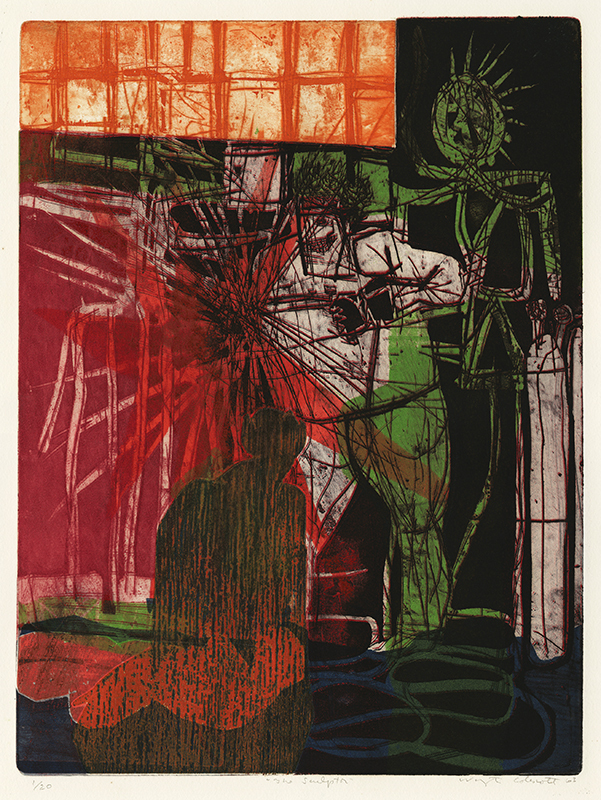
19th, 20th & 21st Century Fine Prints
707-546-7352 · fax 707-546-7924 · web: www.annexgalleries.com · email: artannex@aol.com
The Sculptor by Warrington Colescott

The Sculptor
Warrington Colescott
The Sculptor
Warrington Colescott
1921 - 2018 (biography)Noted in the Chapin catalogue: "The print memorializes Italo Scanga, a sculpture professor at the University of Wisconsin whose studio was across the hall from Colescott's etching room. It is among the first prints in which Colescott was cutting and shaping the plates, creating a very sculptural foundation from which to print."
Warrington Colescott, painter, printmaker, and educator, was born in Oakland, California on March 7, 1921. His parents, Warrington, Sr. and Lydia Colescott, were New Orleans Creoles who moved to Oakland in 1920. Colescott received his B.A. from the University of California, Berkeley in 1942 but further studies were interrupted when he was drafted into the United States Army during the Second World War. Upon his discharge, he returned to the University of California where he earned his M.A. in 1947. Colescott's brother, Robert Colescott, is also a noted artist
His teaching career began the same year when he accepted an instructor position at the Long Beach City College in Long Beach, California. Colescott made his first print, a serigraph, while at Long Beach and he taught there for two years before moving to Wisconsin in 1949. That year he began his long and illustrious teaching career at the University of Wisconsin at Madison. He was named Associate Professor in 1955, Professor in 1958, and Professor Emeritus in 1986.
In 1953, Colescott attended l’Académie de la Grande Chaumière in Paris. He received a Fulbright Fellowship in 1957 that allowed him a year of study the Slade School of Art in London and, while there, he worked under the instruction of Anthony Gross and learned the spectrum of intaglio processes. Colescott received a Guggenheim Fellowship in 1965, a National Endowment for the Art Printmaking Fellowship in 1975, and National Endowment for the Arts Artist Fellowships in 1979 and 1983. Collescott’s early graphics were abstractions created in the medium of serigraphy. By the early 1960s he had turned his focus on intaglio printmaking and his imagery evolved into social satire and commentary. He produced a number of narrative satires, including one on the history of printmaking.
